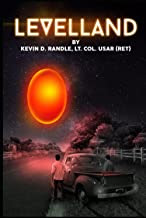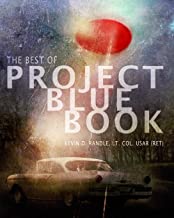In February 1989, I arranged for Don Schmitt and me to meet with Bill Brazel Jr. in Carrizozo, New Mexico (seen below, me, Bill Brazel and Don Schmitt), to discuss his memories of picking up fragments of debris from an alien spacecraft crash. I fully ex
 pected to learn that the testimony that had been attributed to him by others to be inaccurate and nowhere nearly as spectacular as reported. To my surprise, he confirmed that he had picked up the debris, which he described in terms that suggested something other than the terrestrial, that he had kept that debris in a cigar box that suggested there wasn’t much of it and it wasn’t very large, and that, finally, Air Force officers and enlisted men from the Roswell Army Air Field eventually visited him and confiscated it.
pected to learn that the testimony that had been attributed to him by others to be inaccurate and nowhere nearly as spectacular as reported. To my surprise, he confirmed that he had picked up the debris, which he described in terms that suggested something other than the terrestrial, that he had kept that debris in a cigar box that suggested there wasn’t much of it and it wasn’t very large, and that, finally, Air Force officers and enlisted men from the Roswell Army Air Field eventually visited him and confiscated it. The substance of that interview was reported first in UFO Crash at Roswell and later in The Truth about the UFO Crash at Roswell. There is one line in that interview that sparked controversy in the early 1990s. Brazel, in describing what happened to the material, said, "I still am not really sure, but I’m almost positive that the officer in charge, his name was Armstrong. A real nice guy. Now he had a sergeant with him that was real nice. And I think there were two other enlisted men."
Stan Friedman used the same testimony in his Crash at Corona. Though he does not provide attribution, it is clear that he is quoting from the interview that Don Schmitt and I had conducted.
Friedman wrote that Brazel said, "I’m almost positive that the officer in charge, his name was Armstrong. A real nice guy. Now he had a [black] sergeant with him that was real nice. And I think there were two other enlisted men.
Jerry Clark, writing in the International UFO Reporter, notes this change. Commenting on Crash at Corona, Clark wrote:
In other ways it [Crash at Corona] is a flawed and disturbing work, an object lesson in the consequences of uncritical claimant-advocacy.
The most chilling example of this appears on page 85 [hardback] where we find these words attributed to Bill Brazel, son of Mac [sic] Brazel, the rancher who discovered the debris. Brazel reports four Air Force men called on him after learning that he had kept some of the material. One was an officer named Armstrong. "He had a [black] sergeant with him,’ the book reports, quoting Brazel. The same quote, taken from the same interview (conducted by Randle and Schmitt), appears on page 130 [paperback] of UFO Crash at Roswell, but without the bracketed word.
Brackets are placed inside quotes when a writer or editor wishes to clarify meaning or insert commentary or correction. Brackets are not supposed to be used, as they are here in the Friedman/Berliner book, to put words into someone’s mouth - especially when those words state something contrary to fact. Not only has Brazel never said the sergeant was black, he emphatically denies it.
So why the adjective between brackets? The answer is simple: To make Brazel’s testimony conform to [Gerald] Anderson’s. Anderson already knew of Armstrong and the sergeant from his reading of the Roswell literature. All Anderson did was to add a detail about the sergeant’s racial identity. By dropping in a bracketed word, which not only fails to elucidate but actively misrepresents Brazel’s testimony, Crash at Corona creates corroboration for Anderson’s story where none existed.
Why bring this up now, you might ask. It was discussed in the July/August 1992 issue of the International UFO Reporter. Simply because the issue has been raised again. Italian UFO researcher, Paolo Martinuz, who has been following the Roswell case for years and who is completing his own book about it, wrote to Friedman, asking him about the bracketed word.
According to the information I received from Martinuz, he asked Friedman (through email), "In the book "Crash at Corona" in the interview to Bill Brazel it’s quoted an important note during the talk of Brazel with Armstrong: He had a (black) sergeant with him. Why "black" is between brackets. Really Brazel said that the sergeant was "black"?
Friedman said, "He said... [it begins with an N and is a racially charged word]. I didn’t want to use the word."
This revelation surprised me since I had conducted the interview. After the original controversy erupted, I called Bill Brazel on December 5, 1992 to ask about it, and I recorded the interview (as I had the first). I said to him, "I’ve got one quick question for you if you don’t mind...Remember when we brought Don Berliner by? He’s now saying that you said the sergeant with Captain Armstrong was black."
Brazel said, "No. I didn’t say that. Cause it ain’t right."
"I just wanted to clarify that situation," I said.
"To my recollection anyway, that’s not right. I don’t think there was any colored people in the whole contingent."
One point to note here is that Don Berliner did have an opportunity to interview Bill Brazel in person and that was why I mentioned Berliner to Brazel. But Don Schmitt and I took Berliner to meet Brazel in his home and both Schmitt and I were present at that interview. Had the word come up then, we would have heard it and I certainly would have remembered it, especially in 1992. That was the reason I called Bill Brazel, to get him on tape about the use of the word black... no where had anyone suggested anything else.
So now the question becomes, why, after all these years do we have a new reason for the bracketed word? One that we can demonstrate is inaccurate based on the original 1989 interview, and confirmed by the 1992 interview. And yes, I listened to both tapes again to be sure of these points and I will note that Brazel did use the outdated and possibly offensive "colored" but he didn’t use the more racially charged term and, in fact, I never heard him say anything like that in all my discussions with him.
I emailed Friedman about this, providing him with a copy of the original article and asking if he had a comment. He wrote back that Don Berliner remembered the incident the same way he did. I take this to mean that Berliner remembered that Brazel had used the racially charged word and they had simply substituted the more acceptable term.
So I emailed Don Berliner about this, outlining, briefly what the controversy was about, meaning the insertion of the word into the interview that Schmitt and I conducted and this new allegation that Bill Brazel had used a very derogatory term.
Berliner wrote a brief note back and said, "I have spent very little time on Roswell matters in the past 15 years, and have no clear memory of what you and Stan are discussing."
The bottom line here is still that Brazel never used the word in my presence, never suggested that any of the soldiers who visited were black and, in fact, denied it, all on tape. I have both tapes and can prove that Brazel didn’t say it. There is no proof available that he did, and he, in fact, denies it.
I could say that we’re back to needing a reason to insert the word into the interview, but I think the reason is clear. Jerry Clark explained it. What I don’t know is why we have this latest version for doing that. Bill Brazel never said it and it should not have been included. It merely adds to the already confused picture of the Roswell case and that we don’t need.



























